Black-capped Chickadee: Hypothermia & Neuroplasticity
Black-capped Chickadee (Poecile atricapillus) adaptations.
Originally published February 13, 2024. My most popular post. I have many times the number of subscribers now, so wanted to revisit, update, and reshare for new readers.
Black-capped (Poecile atricapillus) is North America’s most widespread chickadee. Their range map includes much of the northern United States, Canada, and a chunk of Alaska. Just a northwest smidge of California—that state is the jurisdiction of Mountain (Poecile gambeli) and Chestnut-backed Chickadees (Poecile rufescens).
If you see a chickadee and ask a non-birder what it is, chances are they’ll know. They might not be able to differentiate a Black-capped from a Carolina (Poecile carolinensis), but many birders—myself included—have a hard time with that.1
When I did a Big Year, I wanted to log Carolina and Black-capped Chickadee. Seemed doable and I did, along with Mountain.2
Boreal (Poecile hudsonicus) and/or Chestnut-backed would’ve been nice to add, but you can’t always get what you want.
The Boreal is “mostly north of the Canadian border…it survives the winter even as far north as the Arctic Circle.” Maybe I could’ve tried more for a Chestnut-backed. I birded in Southern California. Mountain Chickadees are in the mountains there; Chestnut-backed can be along the coast but are more common in the Pacific Northwest.
The Black-capped Chickadee is adapted to winter. I’d been assigned to write about ways a bird I saw on a recent outing had evolved to deal with climate. Most outings I see a chickadee, so did some research. Seeing a bird regularly shouldn’t make that bird boring, it’s merely an invitation to know it well.
There is a lot to know about the Black-capped Chickadee.
They have high metabolisms and typically stay over 100°F. An episode of BirdNote explains birds are endothermic, their bodies “maintain a constant temperature, around 106 degrees.” Numbers I came across for Black-capped Chickadee were 107° or 108°. They have to eat plenty to keep this metabolic rate up, and eat pretty much nonstop. BirdNote also explains:
Birds are built for a high-energy lifestyle. Their hearts pump more oxygen-rich blood per minute than those of mammals…An active hummingbird’s heart pumps at twelve hundred beats per minute; a flying pigeon’s heart beats at 600. But a human athlete during exercise builds up a heart rate to around only 150 beats, a mere fraction of the hummingbird’s heart rate.
Black-capped Chickadees are small birds—10-12 grams, a AAA battery—so have a high surface-area-to-volume ratio.
Animals in the cold benefit from a low surface area-to-volume ratio; less surface area results in less heat loss. A chickadee fluffs its feathers to lower its surface-area-to-volume ratio.
Black-capped Chickadees (Poecile atricapillus) have a half-inch layer of feathers, “approximately 1,100 feathers during summer, [which] increases to over 2,500 in winter.”
Down captures heat next to the skin; outer feathers are coated with oil and interlock to combat water. With such well-designed feathers, most of a Black-capped Chickadee’s heat is lost near the eyes and bill—where feathers are not.
A chickadee will eat 60% of its bodyweight in a day. 6 grams for a 10 gram bird, 7.2 if 12. Per the National Park Service,
One Fairbanks researcher often refers to these small songbirds as “barracudas with wings”…constantly searching for food and when they find it they seize it with powerful vise-like bills.
A study weighed chickadees in the morning and found little body fat; the same birds had ample fat by afternoon. Black-capped Chickadees tack on fat during the day, reaching about 7%. At night they burn it to keep body temperature high; fat gets down to 3% by morning.
Chickadees also enter regulated hypothermia to lower body temperature by up to 15°F. Lower body temperature permits a bird to conserve a percentage of hourly metabolic expenditure. Chickadee body temperature gets no lower than 86°. An article in The Journal of Comparative Physiology says a chickadee exposed to 0°C (32°F) displayed a 32-45% lower metabolic rate. Controlled hypothermia allows the bird to conserve more energy as air temperatures drop.
Another remarkable adaption is the chickadee’s brain grows about 30% in the fall when food is cached. An NPR article expresses envy at this neuroplasticity: “What Chickadees Have That I Want. Badly.” Wouldn’t it be nice for such neuroplasticity to help us remember where we left our keys?
The Black-capped Chickadee’s brain grows so it can remember where food was cached; last time I wrote about chickadees I pointed out David Sibley says, in What It’s Like To Be A Bird, that chickadees remember where seeds are and “at least some information about which ones are the best quality and which ones have been eaten already.”
The number of neurons in the hippocampus increases; when they are no longer needed memories are erased. The hippocampus shrinks back down in spring. To quote the Montana Natural History Center, neuroscience researchers
reviewed current ornithology studies to better understand how the expanding and shrinking chickadee hippocampus contributes to survival. They concluded that the changes in hippocampal size might help the birds to store their caches further apart in an effort to deter other hungry animals from robbing their stores. Additionally, perhaps the growth in the hippocampus is needed only for encoding the cache, or it may be that the neurogenesis occurs for both encoding and retrieving the birds’ harvest.
I am thankful for adaptations that help chickadees thrive—particularly when the mercury drops. Neuroplasticity, regulated hypothermia, feathers. On a slow birding day it’s nice to hear a chickadee and know getting outside wasn’t all for naught.
The Black-capped Chickadee’s commonness is an invitation to get to know it well. We might get to see them each day, but their remarkableness allows us to think: The size of that bird’s brain fluctuates commensurate with survival needs! It can go into controlled hypothermia!
Black-capped Chickadees offer no shortage of knowledge to gain.
An iNaturalist forum says: “Black-capped Chickadees are slightly larger and have a broader black cap and are found in northern areas. Carolina Chickadees are a bit smaller, with a more compact cap, and are common in the southeastern U.S. Their calls are different too: Black-capped has a slower ‘fee-bee, fee-bay,’ while Carolina’s is quicker and higher-pitched.”
Where there’s range overlap, good luck. Range is the quickest way to tell them apart. Audubon says, “In most places, it’s easy to separate these two chickadees by looking at the map. Where their ranges meet, it may be impossible to identify most individuals, because of the possibility of hybrids.”
At the Grand Canyon. You’d think the birding highlight would be the California Condor, but defining birds were Mountain Chickadee, Brewer’s Blackbird, and Western Tanager—not to mention White-throated Swifts.






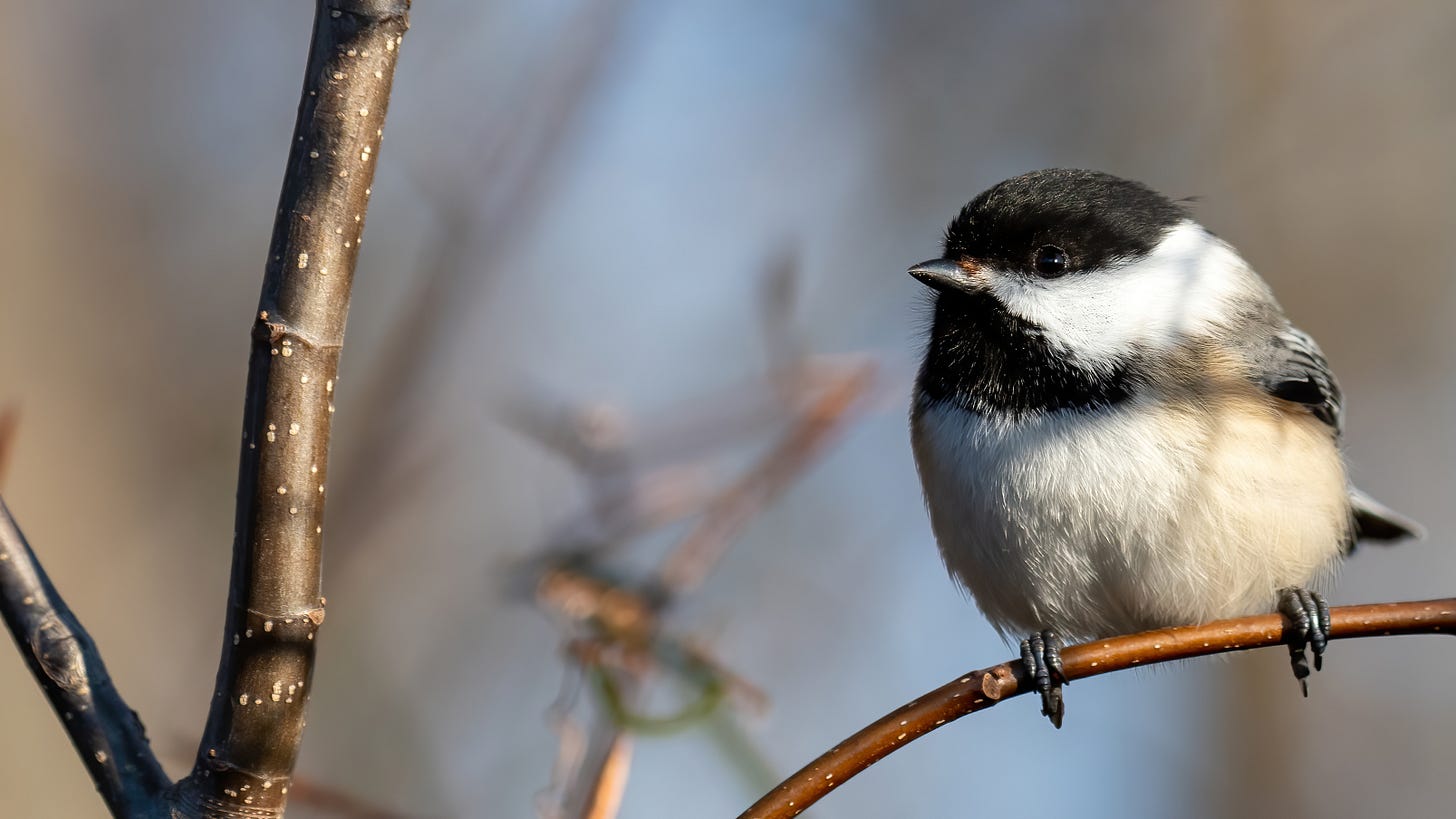



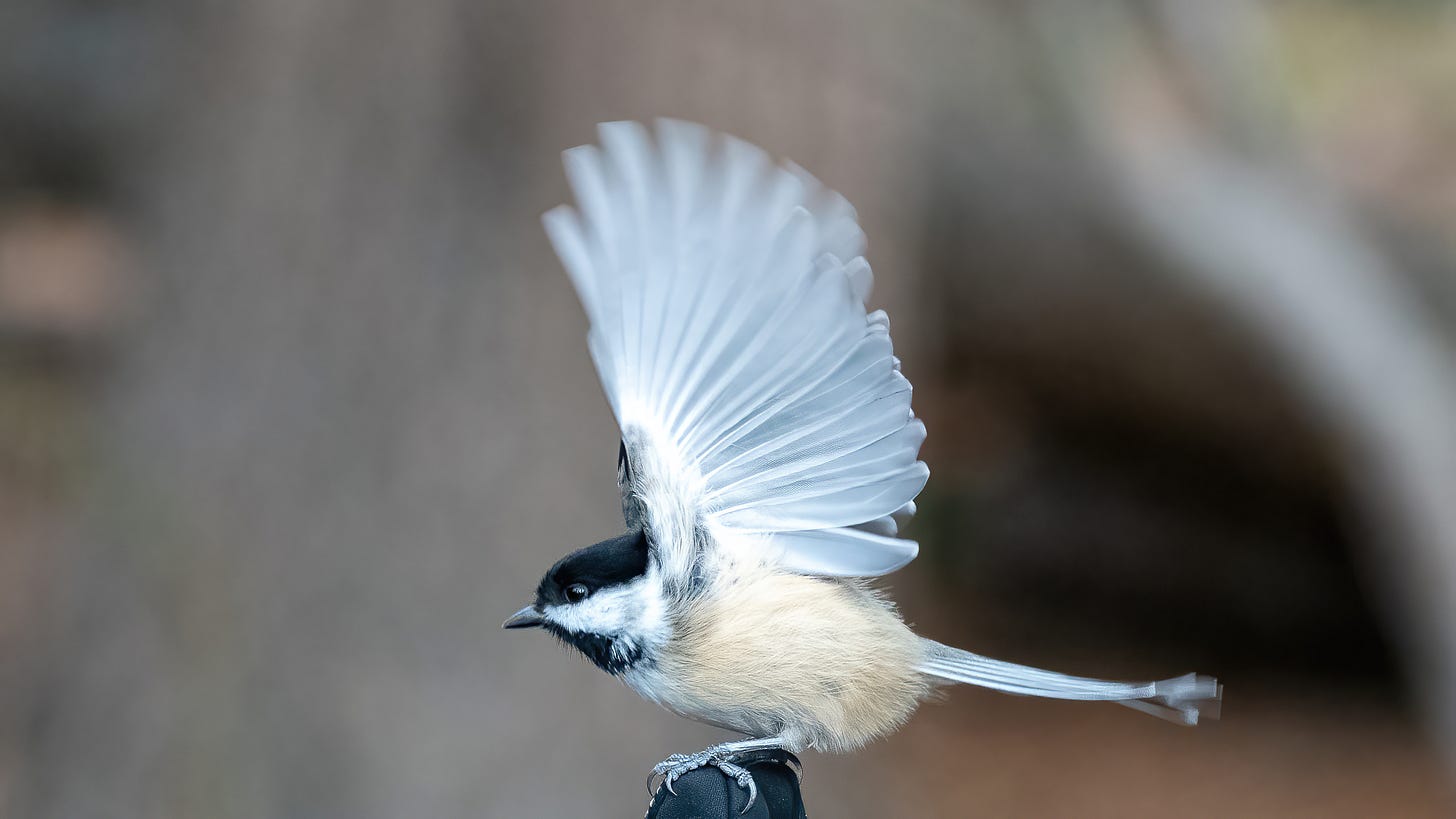

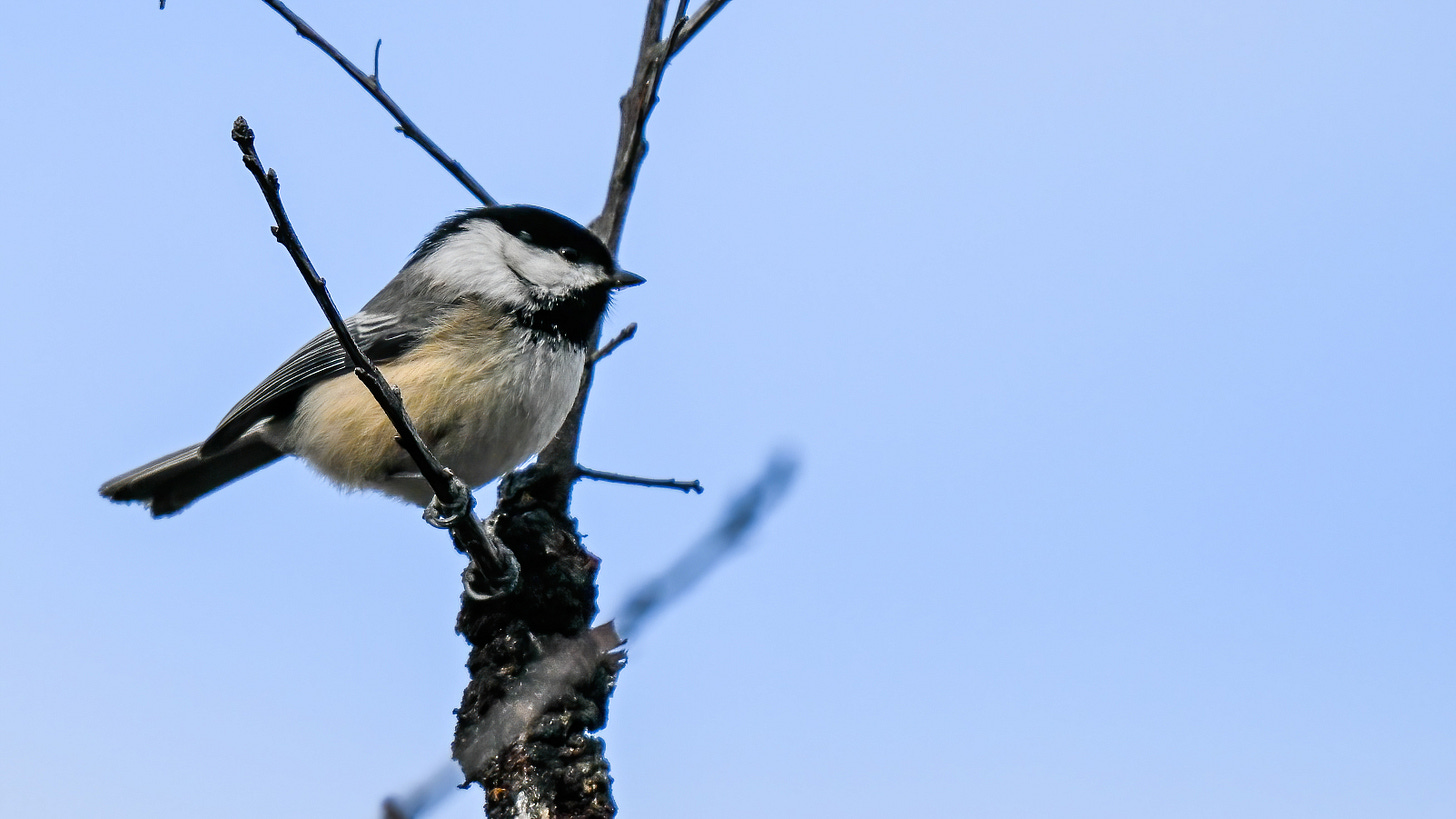
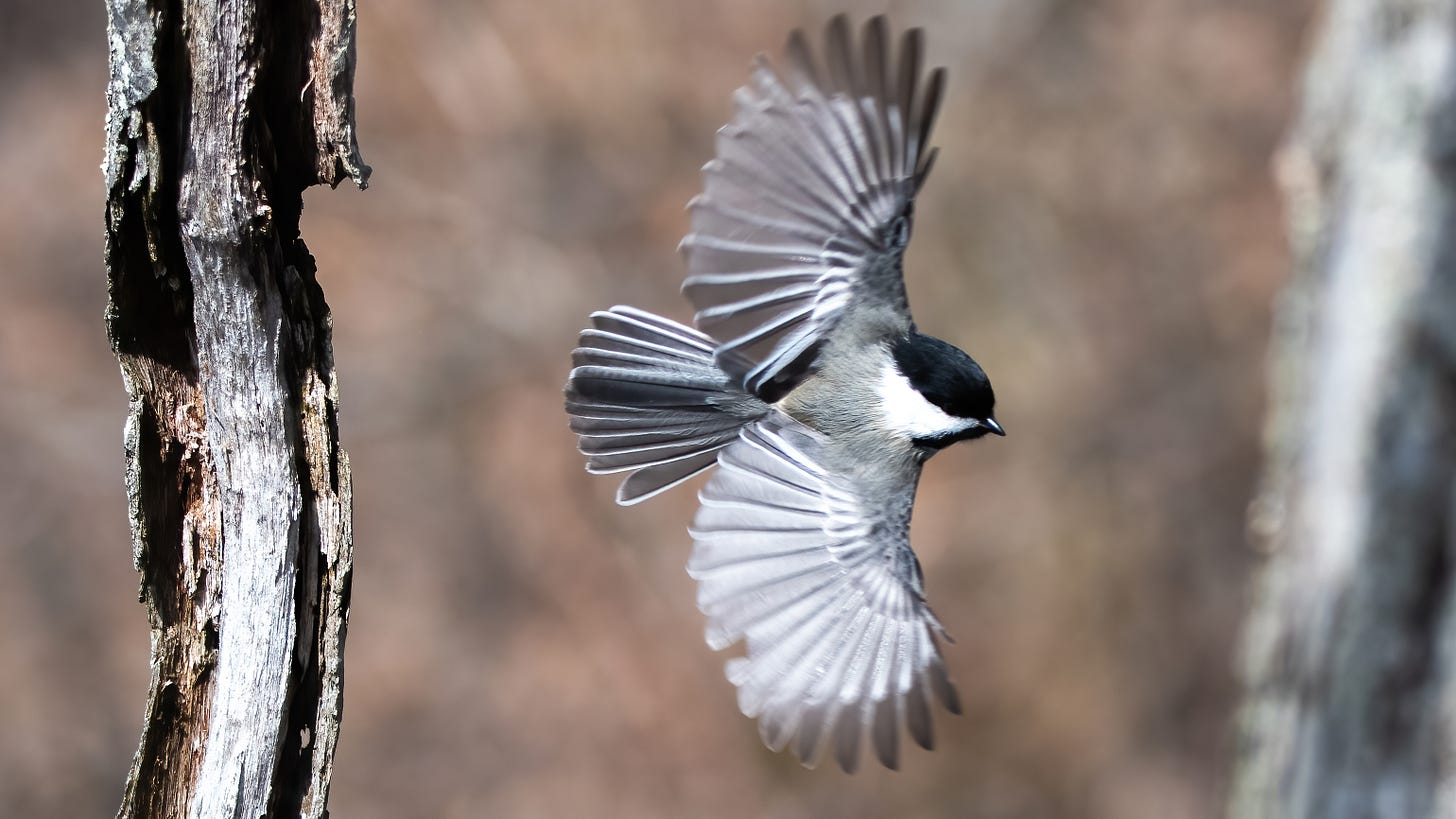
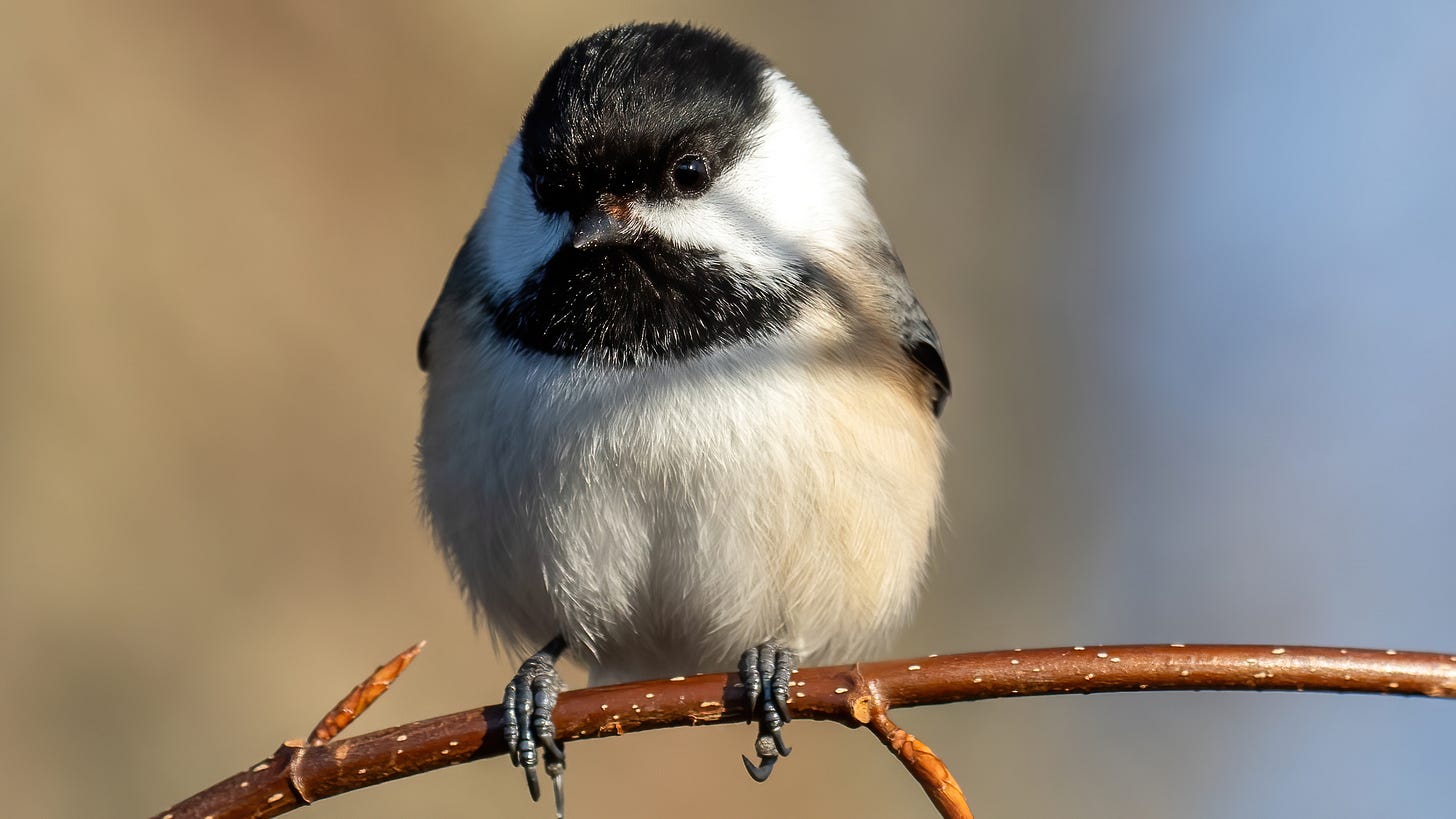
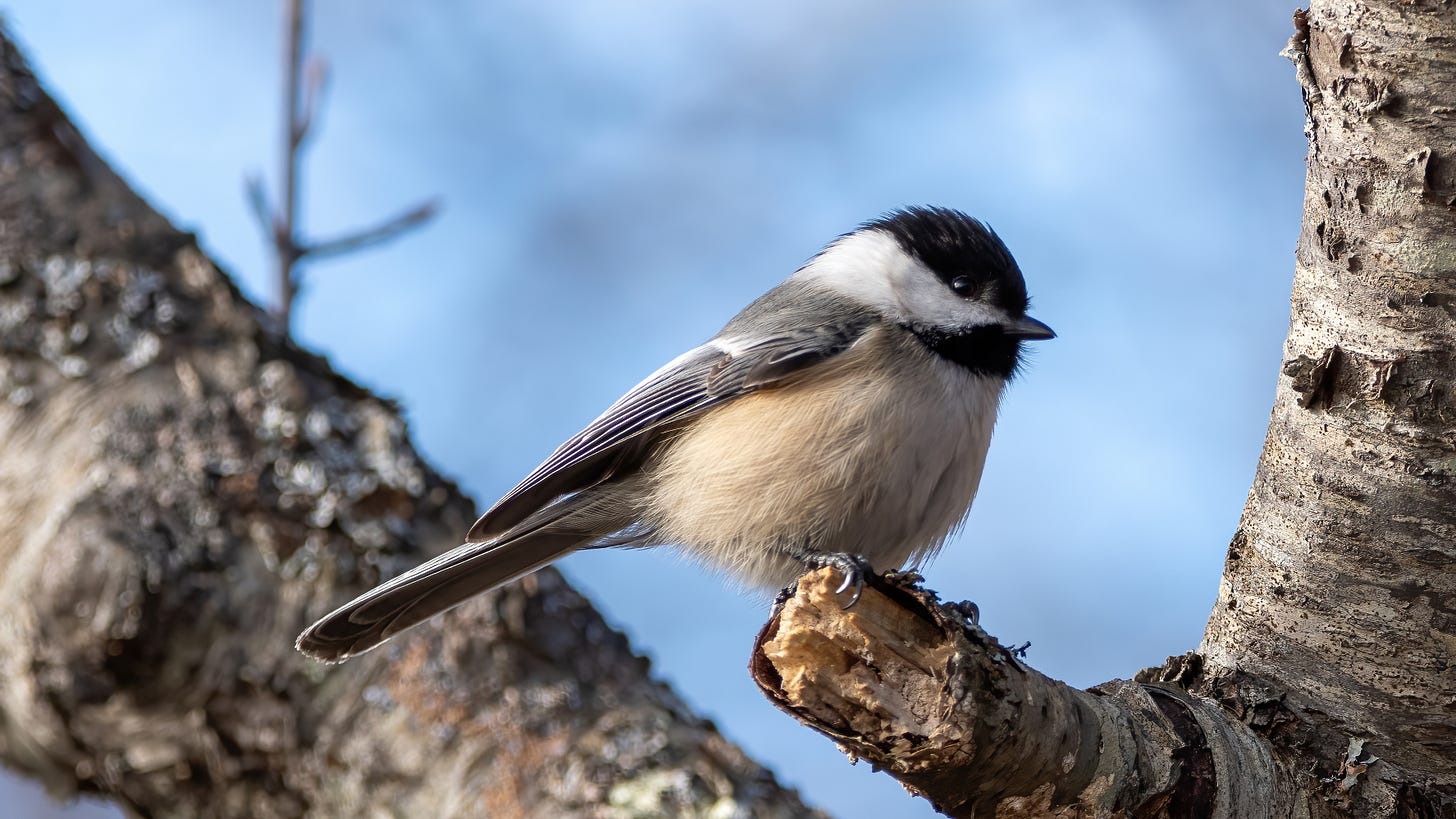




Your explanations behind their abilities and the reasoning for it are truly fascinating. Thank you brother. Both your content and pictures continue to be excellent
Awesome images and facts of the Black-capped Chickadee, James. They're Nature's little miracle. That is amazing too about their neuroplasticity based on season and survival. They're my near constant companions on my hikes. Thanks for sharing.